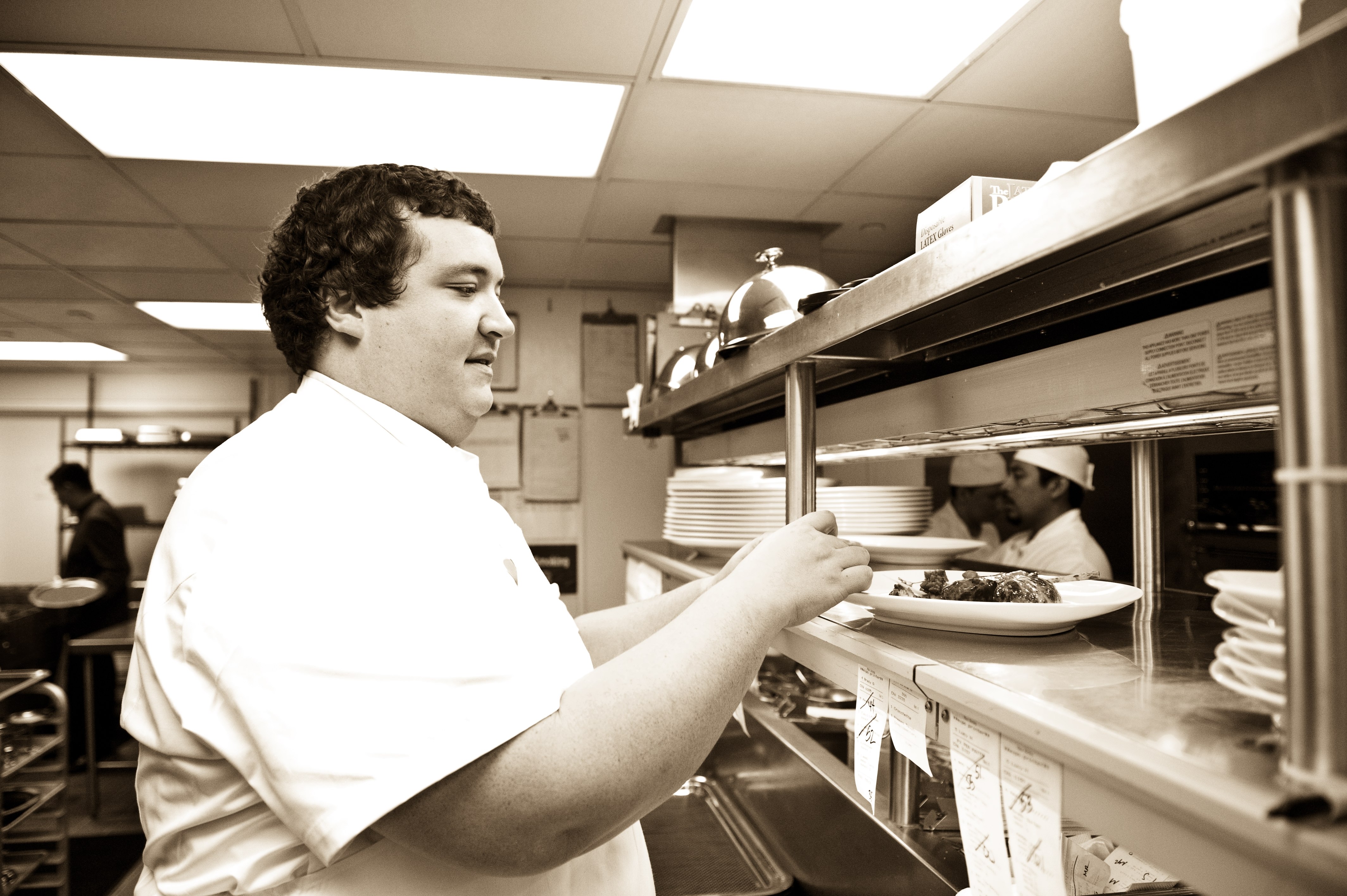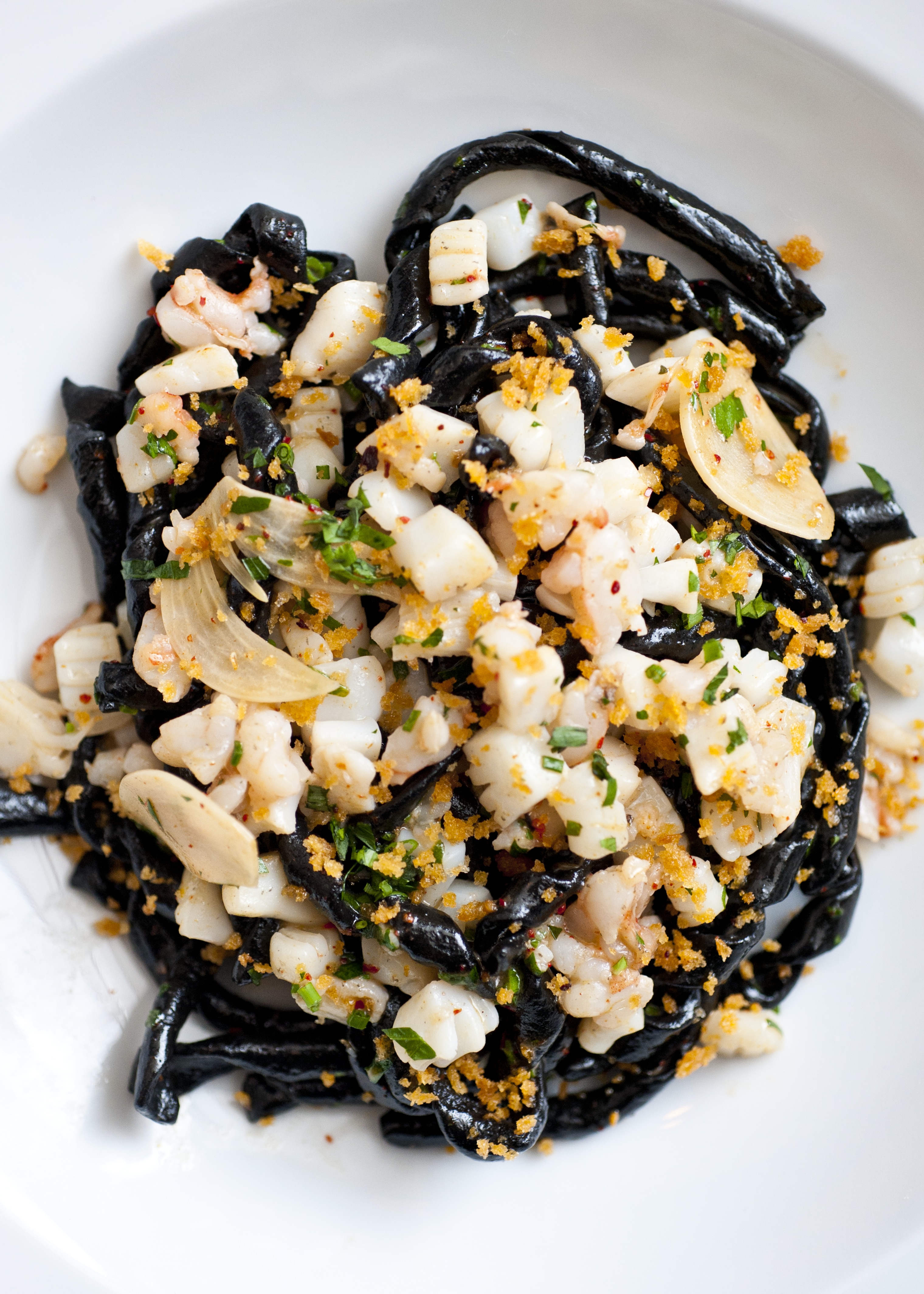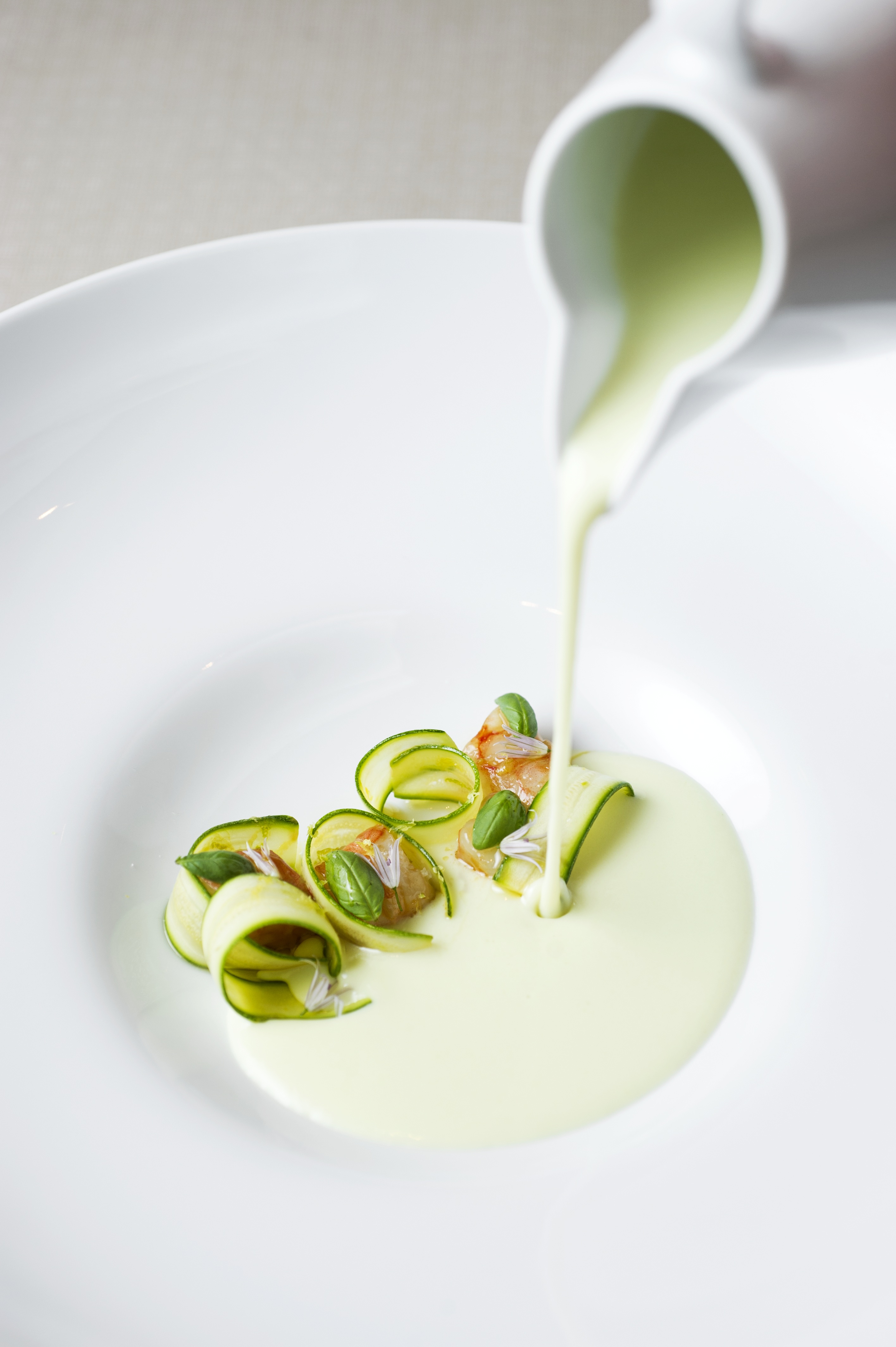PJ Calapa is Executive Chef at Michael White’s Ai Fiori and Costata.
Do you have an earliest food memory?
Yeah, there’s a few. I grew up on the Mexican border. My Dad’s side of the family is Italian, my Mom’s side of the family is Spanish and food was always around. Every event was surrounded by someone cooking dinner or going out to dinner. My grandfather had a fish business in Texas with commercial fishing boats and he would sell fish to customers all around the United States. I remember going there as a young child and playing with all the fish and smelling all the fish and not being allowed to go anywhere after that because I stunk. But then that fish coming home with us and my mother cooking fish for us, or my grandmother cooking fish for us. Making ceviche and my mother’s ceviche recipe is still ingrained in my head and that will be on one of my menus one day.
How did you get into professional cooking?
So I did it for a long time. I didn’t know that I loved it, I just knew that I was into it. Because of where I grew up, I never actually knew that it could be a career. I graduated from high school, I went to college at Texas A & M, had a degree in Economics and there was no other choice in the family. I remember cooking dinner for my friends in my house for 12 people and it was no big deal. And, I remember someone saying you should be a chef. And I was wondering if that was even possible. This was around the year 2000, not that long ago, but it was so far beyond in my eyes that it could be a profession. I remember calling my parents and them saying no way. I finally convinced them to let me get a job in Texas working in a restaurant and then it all happened after that. There was no turning back at that point. I went to CIA and I’ve been in New York since.
Who were your culinary mentors?
First and foremost, I always give credit to the first place I ever worked, which was called Christopher’s World Grill in Bryan, Texas. Christopher Lampo was a CIA grad and they make everything from scratch and it was the proper kind of restaurant to train at. Especially because in the market in Texas at that time there was a lot of change and people not doing things the right way.
My first job in NY was at Bouley, with David Bouley. The Chef de Cuisine was Cesar Ramirez and I knew I was somewhere special at that point but didn’t know because I was so new to New York. I knew that I did everything wrong at the beginning and I knew that I didn’t want to do it wrong. He instilled a standard in me that will never change. And, I still hold that standard in me and hold it to everyone that I work with and who works for me.
As a chef with experience with both Japanese and Italian cuisine, do you see any parallels?
When I told people I was going to work at Nobu, they were surprised because I’m not Japanese. But I told them it doesn’t really work like that there. Food is food, the ingredients change, but cooking is cooking. There’s obviously different styles in different regions and differerent countries but at the end of the day cooking is cooking. You cook a piece of meat and you cook a piece of meat. Once I immersed myself in that Nobu culture and the Nobu version of Japanese, I understood what the key ingredients were. But, his ability to expand in different directions, I sort of learned the core ingredients and rules I needed to play by and at that point I just let myself be creative.
Taking that fine dining version of Japanese now, I see immense parallels between Japanese and Italian. The emphasis on ingredients is like none other in the world. You eat at a three star Michelin in Italy and they’ll give you a piece of mozzarella on a plate. But, it’s the best mozarella from the best person from the best town and I love that. I think that simplicity in food is difficult. I think everyone can put twenty different ingredients on a plate but can you do four and do it right. So, Nobu taught me that. The Japanese style taught me that and now I’ve definitely put that into the way I cook now, which is more Western and Italian.
What ingredients inspire you right now?
Anything green. The morels right now are beautiful. I was so impressed with the quality we’re getting from the West Coast so I’m putting on everything right now. We just got our first batch of asparagus from Jersey, which is beautiful purple top asparagus. That, I look forward to because it’s only a month long season. There’s asparagus from around the world twelve months a year, but when it’s right there and in season it’s fantastic. I’ll eat it shaved raw in a salad.
What’s your favorite kitchen tool and technique?
My favorite tool is a knife and my go to is my slicer that I use for everything. If it was an electronic tool, I would say a Vita Prep. The power those blenders have is incredible. It’s funny, we were just cooking in Korea and we noticed the things they didn’t have compared to what we have. And, we were slowed down because they didn’t have these high powered blenders.
We also do a fair amount of sous vide cooking here. I like to use it the way I like to use it though, which is not for a lot of proteins. We have one lamb dish on the menu, which is lamb rack wrapped in lamb sausage and we needed to take the inside lamb to a certain temperature before the sausage did. But, that’s the only protein that goes in a circulator. We do ten different vegetable techniques in a circulator. I feel like that is the best approach for a circulator. Artichokes in the bag, perfect every time. Potato Fondant in the bag, perfect every time. We braise endive in balsamic in a bag. You literally have to add no moisture and it cooks in its own liquid. You can control the temperature, you can control the pressure. We’ve really expanded on technique in that direction.
What’s the process of creating new dishes for the menu?
The main approach comes from me but the sous chefs and I will sit down and have a menu meeting. We’ll talk about the direction we want to go with certain things. Sometimes I’ll draw a complete blank and not have an idea for a dish but at other times I’ll say I want this, this and this. They will put all the components on a plate, and we’ll replate and re-taste and build from there. I feel very strongly about empowering the young chefs as I was and it’s amazing what we can all come up with as a team.
Favorite dish to cook at home?
I love a good Sunday stew. Lately, I’ve been going in the Italian direction where I’ll braise a pork shoulder in tomato sauce. A little fresh pasta, a salad and everything hits the table at once and we can sit down and talk for hours. That’s how we do it and that’s how I was raised. I reached the point in my career where I was cooking six dishes for my family and spending the whole day in the kitchen and then realizing that was stupid. You need to spend time with them. Things that I can make ahead of time but that are still amazing and delicious.
What are your favorite places to eat in New York?
The Breslin makes me very happy. Their terrine board is flawless; we always start with that. I think their Caesar salad is fantastic and if there’s a big group we’ll do ribeye, we’ll do this or that. It’s great for groups and that’s definitely the style we like to eat these days. I always love to go eat good sushi as well. 15 East blew me away recently. The composed kitchen items were great, the sushi was out of this world.
